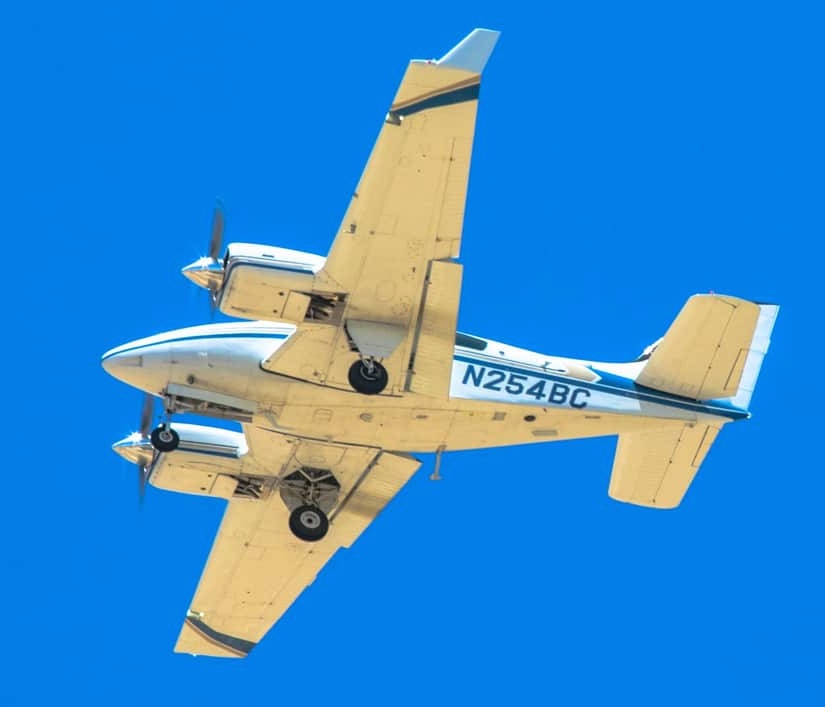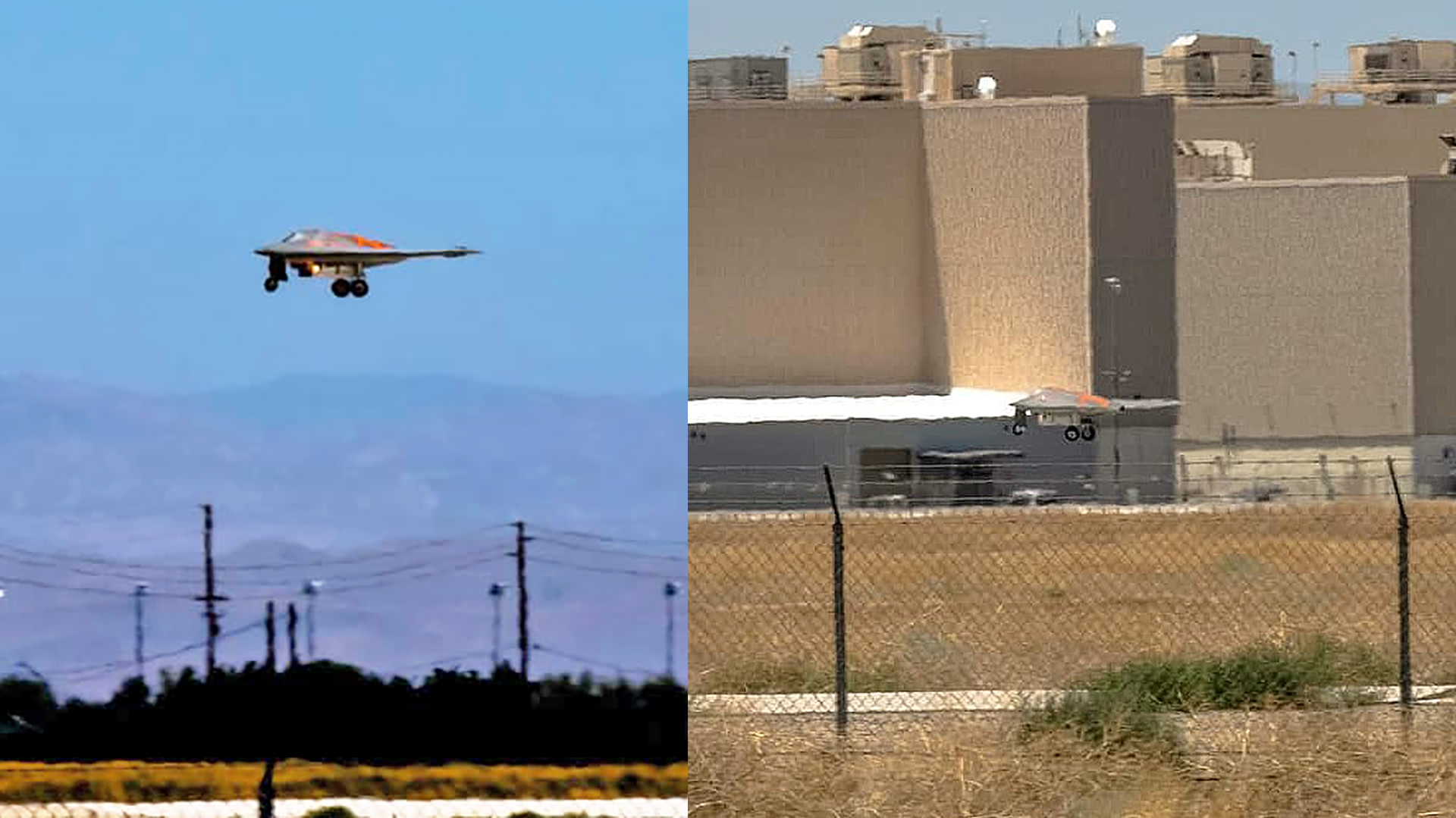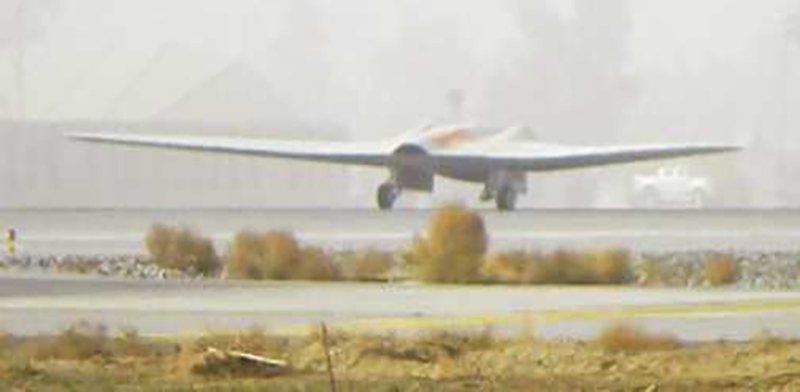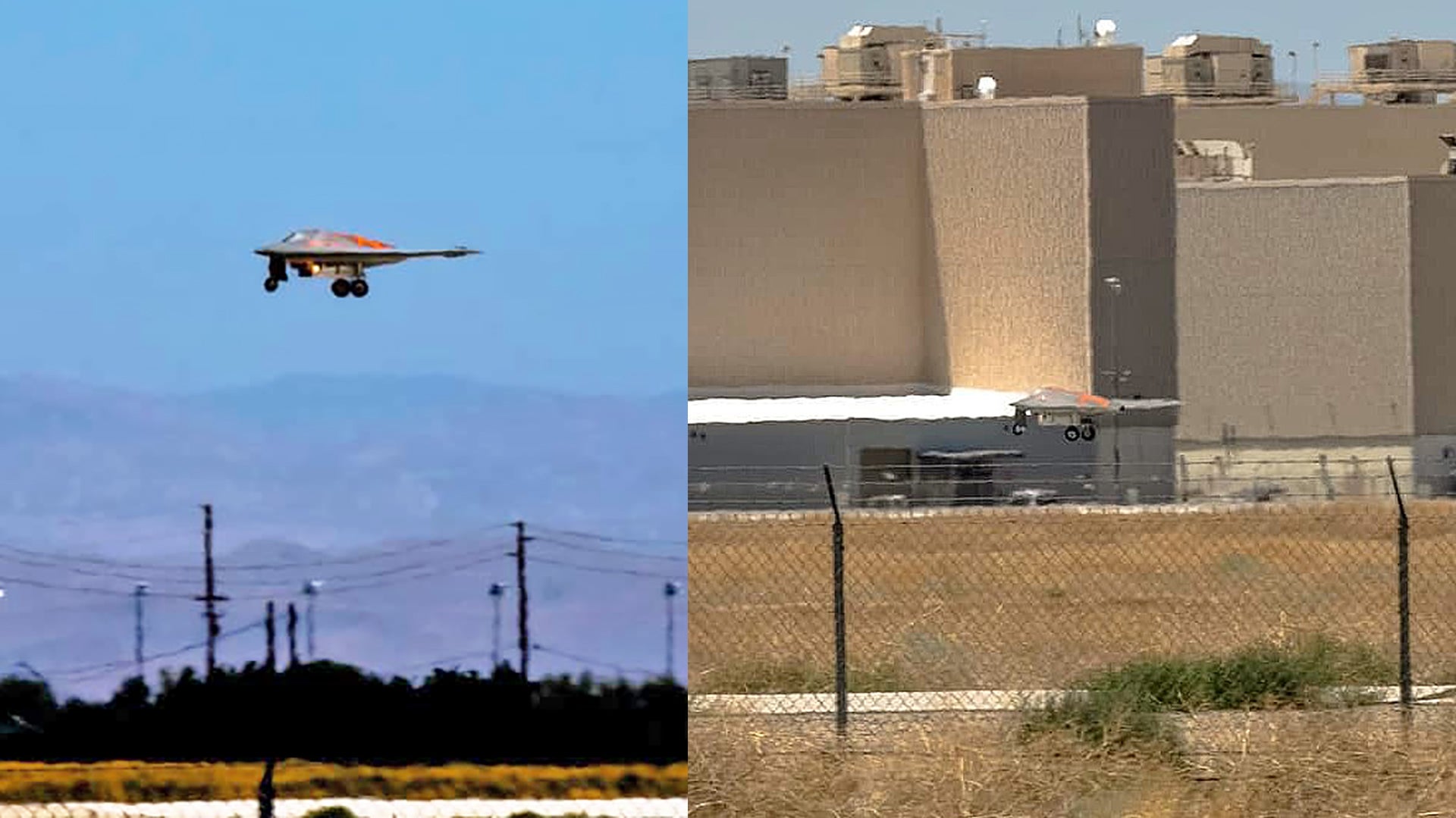Well over a decade since the “Beast Of Kandahar” was first exposed, the stealthy RQ-170 Sentinel spy drone remains an elusive beast indeed. We only know of it operating from six locales with certainty: Kandahar Airfield in Afghanistan, Kunsan Air Base in South Korea, Andersen Air Force Base in Guam, Tonopah Test Range Airport and Creech Air Force Base in Nevada, as well as Vandenberg Air Force Base in California. Now we can add its place of birth to the list, Plant 42 in Palmdale, California—home of the world-famous Lockheed Skunk Works.
The Sentinel, which was made famous for helping find and kill Osama Bin Laden just to fall into Iranian hands months later, landed at Plant 42 in broad daylight while wearing some peculiar bright orange markings on its fuselage. Its small airframe, which only spans roughly 38 feet, is designed to be disassembled and shipped overseas by aerial cargo jet. So, even though the still unknown number of RQ-170s that exist were all built at the Skunk Works plant, they don’t operate from Plant 42.
The person who took the photos noted the following about the chance encounter:
All of a sudden I heard a clearance for a short approach from “JOHNNY01.” A prop plane, a Beech 55 with the registration N254BC, comes high overhead and then I turn and there’s an RQ-170 with dayglo markings! The RQ-170 just dropped out of the sky and did the steepest approach ever, followed by high-speed taxi into the Skunk Works area.
The Beech 55 chase plane circled over Skunk Works until the RQ-170 disappeared into a tent there. Then the Beech landed.
There were two C-130s in the pattern also and they asked the tower if the UAV landed because they had a hard time seeing it move from the downwind. It is such a small airframe.
The witness also noted that the whole movement lasted maybe just two minutes. The aircraft dove in for a landing, fast-taxied to the Skunk Works ramp, and disappeared. We cannot confirm that the Beech 55 was indeed the chase aircraft for the Sentinel in question, but the aircraft, which appears to live at nearby Fox Field, does make some unique flights around ‘Flight Test Valley,’ and regular trips to Beale Air Force Base.

As for the RQ-170’s curious coloring, the aircraft appears to wear the darker of three schemes we have seen so far. One is a white-cream color, another is a black and cream test scheme, and finally, the darker gray one, although there may be slightly lighter and darker variations of the latter.

The orange areas on the aircraft immediately reminded me of the first color photo I ever saw of the RQ-170, which was then operating in Afghanistan and dubbed the elusive ‘Beast of Kandahar.’ That image, which is from around 2007, showed a cream-colored Sentinel with similar high-visibility treatments applied to its upper fuselage. Since then, I have never seen or heard of another Sentinel configured with the orange markings.
That is until today.

It isn’t precisely clear what this orange-colored treatment is for. Is it tape used to seal crevices and gaps in the Sentinel’s skin, similar to those used on all stealth aircraft? If so, why orange? The answer could be that it provides high-visibility markings to assist in visual tracking during test flights. Bright orange is synonymous with flight testing for a reason. As the witness mentioned, the RQ-170 is easy to lose sight of, especially side-on, where its visual footprint looks more like a flying saucer than a flying wing. A bit of orange paint or tape could probably go a long way in fixing this issue.
As for why would a Sentinel land at Palmdale now, after all these years? That isn’t clear either. Maybe a handful of the drones have slipped in and out before, but that would have been far from a regular occurrence, especially during the daytime. Otherwise, they would have been seen.
So there you have it, at least one of the still secretive RQ-170s has returned to the nest under its own power where it was originally hatched. With any luck, this will be the first of many flights of Sentinels back to their place of birth.
Contact the author: Tyler@thedrive.com
